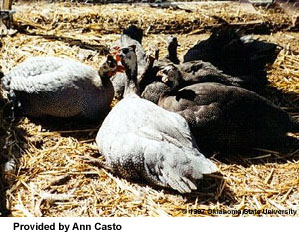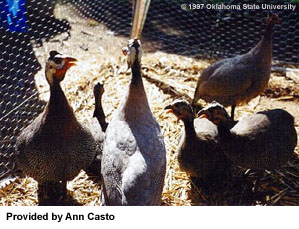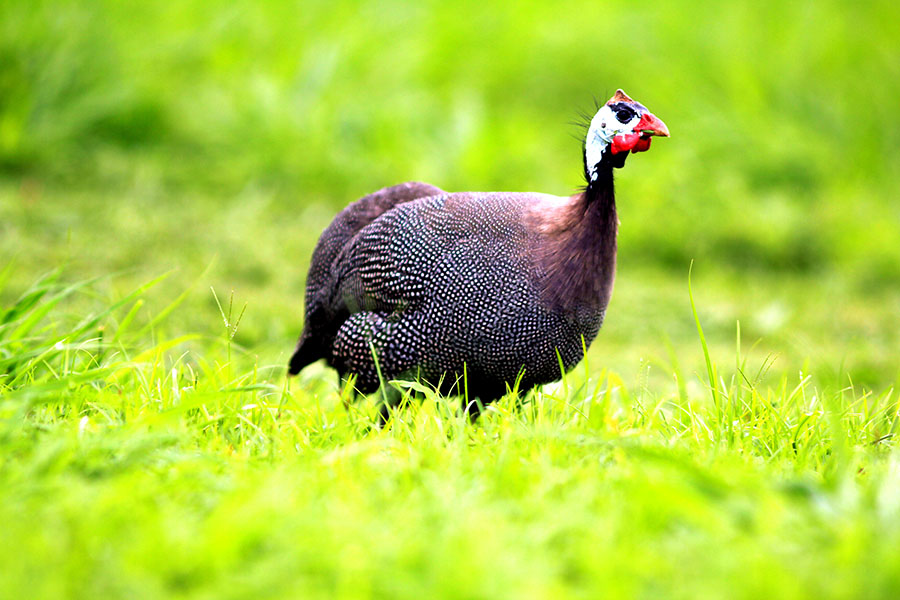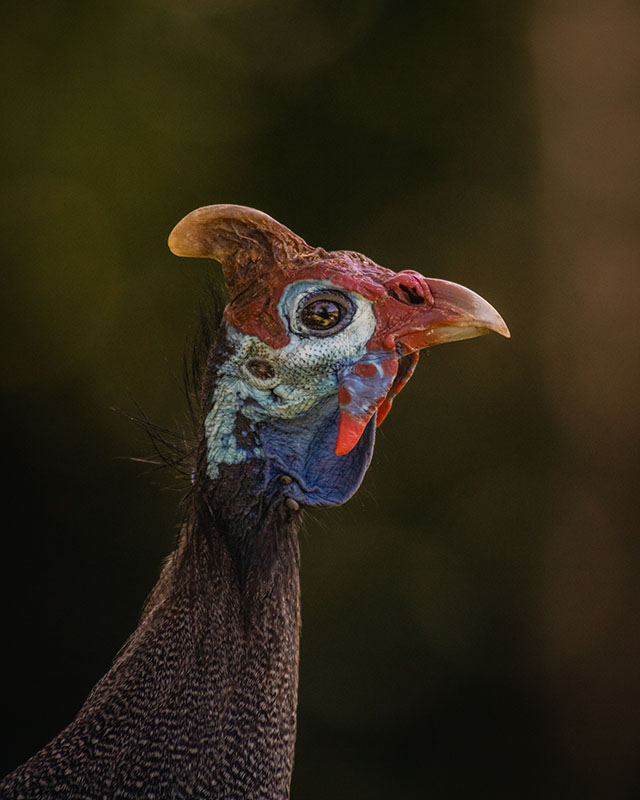Guinea Fowl
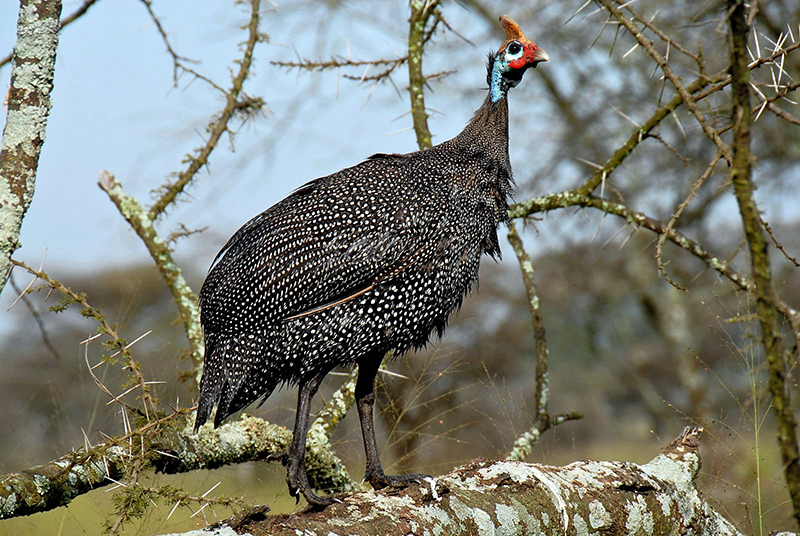 The wild-guinea fowl of West Africa is regarded as the original of the domestic stock.
There are two common varieties, the Pearl and the White. Variations in the color do
occasionally appear, and sometimes guineas are found which are plainly the cross-bred
offspring of the Pearl and White varieties; however, these two varieties, as a rule,
breed very true to color, type and size. The birds rarely weigh over 3.5 lbs, although
appearing larger than this alive. The bones are quite small, and the carcass produces
a relatively large amount of meat. There is good demand for Guinea fowls in the large
markets, and because of their wild game flavor the birds are served extensively in
the larger hotels and higher priced restaurants. The eggs are small, of dark color
and fine flavor, and are apt to be laid in secluded places in the grass and weeds.
The cocks are pugnacious, but Guineas are often kept with other poultry on the farm,
as they segregate from chickens when on the range and cause no particular trouble
to the other fowls. They are usually looked upon as a protection from hawks and a
night guard against thieves, as they set up their peculiar screaming when disturbed.
No strange person or noise seems to escape their notice.
The wild-guinea fowl of West Africa is regarded as the original of the domestic stock.
There are two common varieties, the Pearl and the White. Variations in the color do
occasionally appear, and sometimes guineas are found which are plainly the cross-bred
offspring of the Pearl and White varieties; however, these two varieties, as a rule,
breed very true to color, type and size. The birds rarely weigh over 3.5 lbs, although
appearing larger than this alive. The bones are quite small, and the carcass produces
a relatively large amount of meat. There is good demand for Guinea fowls in the large
markets, and because of their wild game flavor the birds are served extensively in
the larger hotels and higher priced restaurants. The eggs are small, of dark color
and fine flavor, and are apt to be laid in secluded places in the grass and weeds.
The cocks are pugnacious, but Guineas are often kept with other poultry on the farm,
as they segregate from chickens when on the range and cause no particular trouble
to the other fowls. They are usually looked upon as a protection from hawks and a
night guard against thieves, as they set up their peculiar screaming when disturbed.
No strange person or noise seems to escape their notice.
The chicks are small, as would be expected from the rather small eggs. They are susceptible to the dangers of dampness. The hens begin to lay in April or May, but do not become broody early in the season. They are indifferent mothers, and for early hatching chickens should the mothers be used. They lay from three to five dozen eggs. They seldom lay in the chickens nests in the hen house. Hunting for the Guinea hens' nests is usually a pastime, or chore for farm boys and girls.
It is not easy to distinguish the sex of Guineas. The male has slightly larger head appendages. The female seldom screeches like the male. The male selects his mate and they remain steadfast companions. The chicks when hatched are very active, with bright eyes, and like the pheasant there is an indescribable timidity about them.
References
All Breeds of Poultry, Origin: History: Description, Mating and Characteristics, by Frank L. Platt. Published by AMERICAN POULTRY JOURNAL, Chicago, Illinois.

